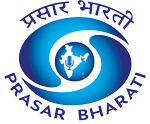The Ministry of Statistics and Programme Implementation has released the first Monthly Bulletin of the revamped Periodic Labour Force Survey (PLFS) for April 2025. The report highlights key employment and unemployment indicators, including the Labour Force Participation Rate (LFPR), Worker Population Ratio (WPR), and Unemployment Rate (UR), across rural and urban India based on the Current Weekly Status (CWS) of individuals aged 15 years and above.
As per the bulletin, the overall LFPR stood at 55.6 per cent during April 2025. Rural areas recorded a higher participation rate at 58.0 per cent, while urban areas reported 50.7 per cent. Among males in the same age group, LFPR was significantly higher—79.0 per cent in rural areas and 75.3 per cent in urban regions. Female participation, though lower, showed encouraging figures, with rural female LFPR at 38.2 per cent.
The Worker Population Ratio (WPR), which represents the proportion of employed individuals in the population, was recorded at 52.8 per cent at the national level. Rural areas registered a WPR of 55.4 per cent, while in urban areas, it stood at 47.4 per cent. Among women, the WPR was 36.8 per cent in rural areas and 23.5 per cent in urban areas, with an overall female WPR of 32.5 per cent.
The unemployment rate in April 2025 was observed at 5.1 per cent for individuals aged 15 years and above. The unemployment rate for males was slightly higher at 5.2 per cent, while for females it stood at 5.0 per cent.
These estimates mark the beginning of a new phase in labour force statistics, following a revamp of the PLFS methodology from January 2025. The revised survey design aims to generate more frequent and comprehensive data. Under the new rotational panel sampling approach, each selected household is visited four times over four consecutive months, allowing for a 75 per cent overlap of first-stage sampling units between any two months. This design ensures better comparability and continuity in data collection.
During April 2025, a total of 7,511 first-stage sampling units were covered nationwide, including 4,140 in rural areas and 3,371 in urban areas. The survey included 89,434 households and covered a population of 3,80,838 individuals, comprising 2,17,483 from rural areas and 1,63,355 from urban locations.
The revamped PLFS also aims to extend quarterly estimates to rural India, which were previously limited to urban areas. The restructured sample design has increased the number of households surveyed within each sampling unit from 8 to 12.














